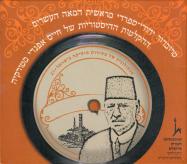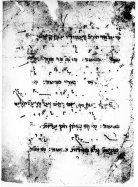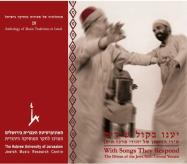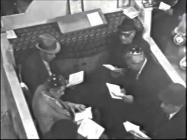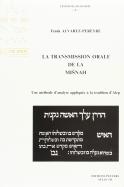(212 results found)
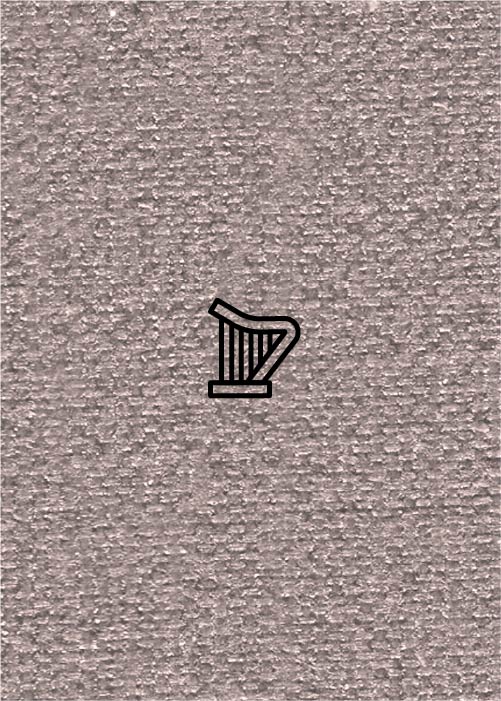
The “Hebrew Melody” by Joseph Achron: New version for voice, violin and piano premiered in Jerusalem, January 8, 2009
… The widely known “Hebrew Melody” by Joseph Achron was composed in 1911 as a piece for … In 1935 Achron returned to this vocal version of the “Hebrew Melody,” adding to it a violin obligato part. This …
Piyyutim for the High Holidays
… three and six syllables respectively. This traditional melody in makam U'ak is widespread among Sephardi cantors who use it for singing other liturgical texts. The melody consists of two musical phrases repeated according to … called Maftirim performed its ancient repertoire of Ottoman Hebrew music on Sabbath mornings and afternoons at the …
Mi-al har horev from the manuscripts of Obadiah the Proselyte
… Recording of "Mi'al har horev" from Obadiah the Proselyte's Hebrew musical manuscripts, arranged by Andre Hajdu and … a general picture regarding this interesting set of early Hebrew musical manuscripts. In 1918, a fragment containing … itself consists of six rhymed couplets set to a similar melody, ending with the refrain ki-moshe (like Moses). Based …
Im nin'alu
… to many melodies. Alternate stanzas are written in Hebrew and Arabic. Here stanzas 1, 2, 3, and 7 are printed … The singer opens with the song’s most widely known melody, which was popularized by Bracha Zefira among the … closing hemistich. The tawshihִ is sung to another, faster melody. It is usually sung in a responsorial manner, as …
Baqqashah (Pl. Baqqashot)
… poems written by the poets of the so-called ‘Golden Age’ of Hebrew poetry in Spain (10th to 13th centuries), and these … lifetime. Moreover, the lehanim (plural of lahan, tune or melody) to which Najara required his piyyutim to be sung are … by the individual. The Baqqashah is unique to the religious Hebrew poetry of medieval Spain, it is usually scanned in …

The Cantorial Fantasia of the Eighteenth and Nineteenth Centuries: A Late Manifestation of the Musical Trope
… Yom Kippur. The cantorial fantasia on 'Alenu', based on a melody which is considered one of the MiSinai Tunes, is … Centre … 38706 … 65–85 … Jerusalem … The Magnes Press, The Hebrew University … Yuval Studies … … Hazzan, Hazan, …

Review of recording: Pizmon
… pl.) is the term employed by the Syrian Jews to denote a Hebrew song in praise of God, whose melody is borrowed. … 95 … 95 … 3 … International Folk Music …
La transmission orale de la Mishnah
… types of sound patterns ranging from speech to full-fledged melody. … 95 … 95 … monograph … 38922 … 307 … Jerusalem … The Magnes Press, The Hebrew University … Yuval Monograph Series … Une methode … la tradition d'Alep … Mishnah … 8 … 9431 … 1990 … Aleppo … Hebrew cantillation … Mishna … Transcriptions … Chant … …

The "Proclamation Style" in Hebrew
… groups of melodies can be termed 'benediction group'. This melody type appears in the Torah cantillation benedictions, … … 37430 … 249-250 … Jerusalem … The Magnes Press, The Hebrew University … Yuval Studies … … 1968 … Ancient music … … Szabolcsi … Hanoch Avenary … The "Proclamation Style" in Hebrew …

Ne'ima (Nagmah) in Medieval Hebrew Literature
… “neima” and its meaning in terms of: Vowel, Tone, Mode- Melody- Tune, Sonority- Tonality, Vocal Note, Accentuation- … Centre … 37384 … Sep-28 … Jerusalem … The Magnes Press, The Hebrew University … Yuval Studies … … 1971 … Music … Manuscripts … Hebrew … Hebrew language … Arabic … Musical terms … Neima … …



